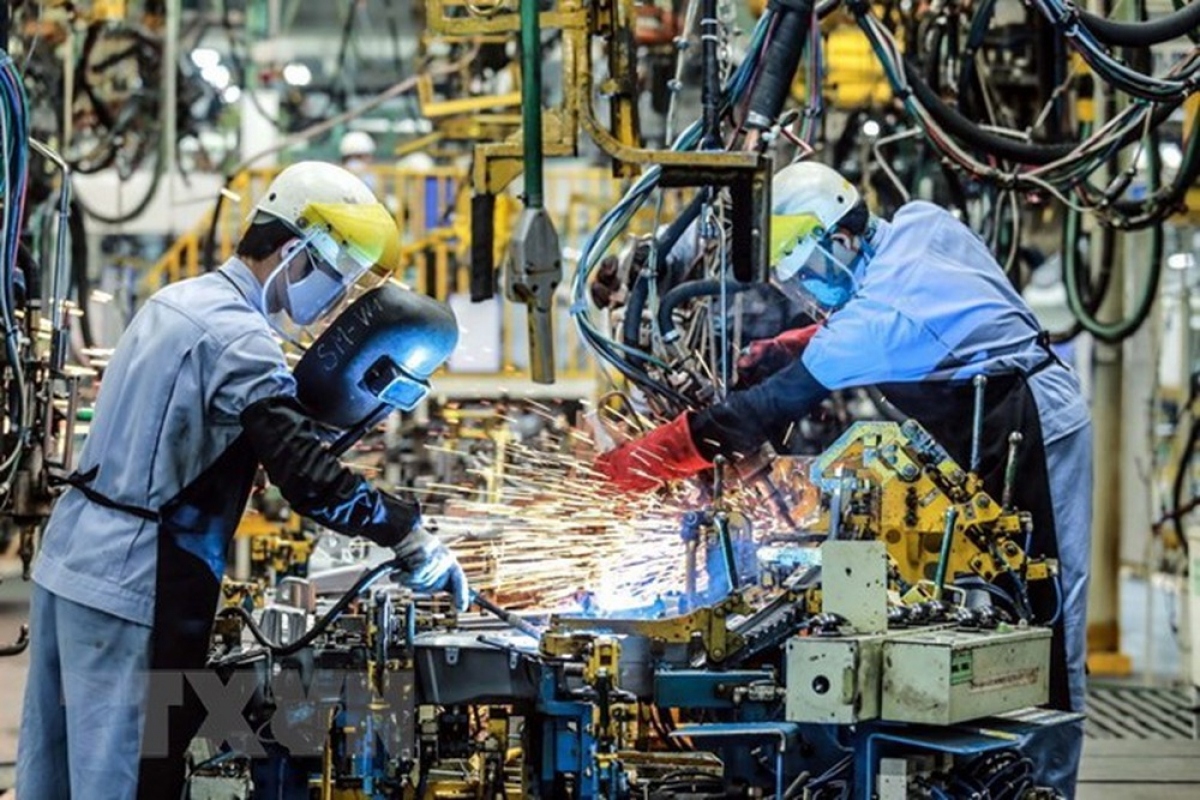Industrial sector enjoys highest growth rate in 2011 to 2020 period
VOV.VN - The global competitiveness of Vietnamese industry has risen 16 places in a decade, from 58th in 2009 to 42nd in 2019, becoming the country to enjoy the fastest growth rate throughout ASEAN, according to the UN Industrial Development Organization (UNIDO) Competitive Industrial Performance Report 2020.
Minister of Industry and Trade Tran Tuan Anh presented these figures in a report during a working session held on January 29 in Hanoi as part of the ongoing 13th National Party Congress.
The nation has risen to join a group of countries whose local industry in terms of global competitiveness is at a medium-high level.
In doing so, the country has moved to fifth position in the region, only 0.0015 points behind the Philippines, and closer to the group of four countries in ASEAN which have the strongest level of competitiveness.
During the 10-year strategic period from 2011 to 2020, the local industrial sector recorded the highest growth rate in terms of national economic sectors, contributing approximately 30% to GDP, thereby becoming the key Vietnamese export sector. This has served to bring the nation from 50th position in 2010 to 22nd in 2019, making it among the world's largest exporters.
At present, the country has established a number of key industries for its national economy, including oil and gas exploitation and processing, electronics, telecommunications, information technology, metallurgy, iron and steel, cement and construction materials, along with garments. This is in addition to leather and footwear, mechanical engineering and manufacturing, and automobile motor and production, all of which creates an important foundation for long-term growth, as well as promoting the national modernisation and industrialisation process.
Furthermore, the process of industrial restructuring associated with renovating the growth model and improving labour productivity has increasingly focused on the core of industrialisation, with the industrial structure recording positive changes. Indeed, the proportion of the mining industry group in GDP has continuously decreased from 9.1% in 2010 to approximately 8.1% in 2016, standing at only 5.55% in 2020.
Moreover, the processing and manufacturing industry has become the main growth driver of the industrial sector, enjoying economic growth of 5.82% last year.
Greater attention was also given to the support industry, with a specific focus on strengthening links with other key manufacturing sectors such as garments and textiles, footwear, electronics, and the agricultural product processing industry.
Notably, supporting industry ecosystems have also taken shape, while there has been an increase in terms of the localisation rate. The proportion of high and medium technology products in the nation has also increased significantly, creating a basis to form a number of large-scale, capable private industrial groups that are able to compete within the international market.
The proportion of processed export products as part of the total export value enjoyed a surge of 65% in 2016 to 85% in 2020, while the proportion of high-tech product export value increased from 44.3% in 2016 to 49.8% in 2020.
Along with investment attraction activities featuring the involvement of major economic groups and leading multinational companies in the nation, domestic enterprises have made great strides to develop large economic groups, including Viettel, Vingroup, Truong Hai, Thanh Cong, and Hoa Phat. Indeed, these firms operate in the fields of basic industry, materials, and mechanical engineering, thereby creating a foundation for the support industry and helping the nation to ramp up engagement in the global value chain.

